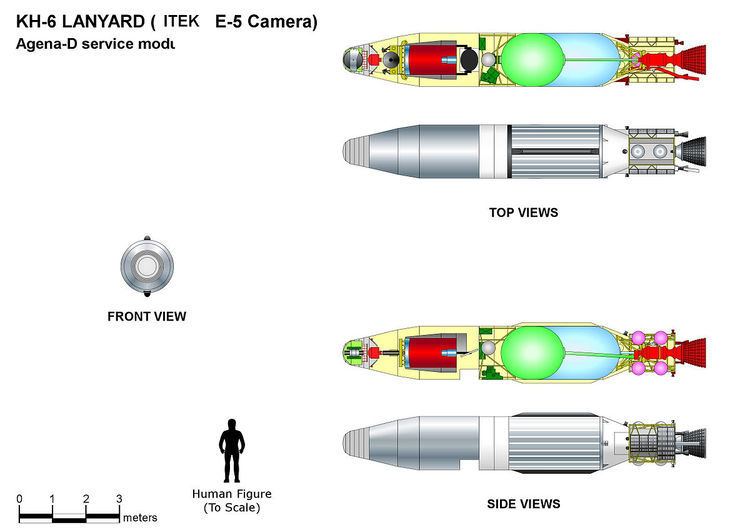 | ||
Codenamed Lanyard, the KH-6 was the unsuccessful first attempt to develop and deploy a high-resolution optical reconnaissance satellite by the United States National Reconnaissance Office. Launches and launch attempts spanned the period from March to July 1963. The project was quickly put together to get imagery of a site near Tallinn suspected of having anti-ballistic missiles. The satellite carried Itek's "E-5" camera developed for the Samos program, which had been cancelled. The camera had a focal length of 1.67 meters (66 inches) and could discern objects on the ground 1.8 m (6 ft) in size. The ground swath of the camera was 14 km by 74 km (9 mi by 46 mi). The satellite weighed 1500 kg, and had a single re-entry vehicle in which exposed film was returned to earth for a mid-air aircraft recovery. The KH-6 was manufactured by Lockheed and launched from Vandenberg Air Force Base on Thor-AgenaD rockets.
Contents
Three launch attempts were made. One attempt failed and another did not use any film.
The film canister contained over 2,250 feet of film with 910 photographic frames.
Launches
(NSSDC ID Numbers: See COSPAR)
